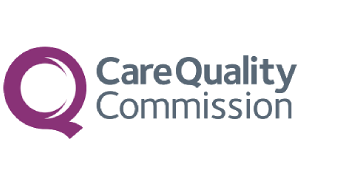Living with ADHD means constantly managing attention, focus, and organisation. Over time, the mental and emotional effort it takes to cope with everyday tasks can become overwhelming. This is often described as ADHD burnout—a state of physical and emotional exhaustion that builds up when daily demands outpace your ability to manage them.
In this article, we’ll explore what ADHD burnout looks like, why it happens, and how to get support if you’re struggling.
What Is ADHD Burnout?
ADHD burnout isn’t just tiredness. It’s a mix of mental fatigue, emotional overload, and the sense that you can’t keep up—no matter how hard you try. It often starts with a burst of motivation that fades into stress and frustration when tasks become too much to handle.
If you’ve ever felt completely worn out after a stretch of hyperfocus or found yourself shutting down after a week of trying to “stay on top of things,” this might sound familiar.
What Are the Signs?
Burnout can show up differently for everyone, but common signs include:
- Constant fatigue, even after rest
- Struggling to focus more than usual
- Feeling irritable, anxious or emotionally drained
- Avoiding work, responsibilities or even social interaction
- A sense of hopelessness or being stuck
These experiences can easily be confused with depression or general stress, which is why getting the right support matters.
Why Does Burnout Happen With ADHD?
There are a few reasons burnout is more common in people with ADHD:
- Mental overload: Trying to plan, organise and follow through on tasks takes extra effort when you have ADHD.
- Masking: Some people with ADHD work harder to appear like they’re managing fine, which can be draining over time.
- Hyperfocus: While hyperfocus can feel productive, it often leads to neglecting basic needs like food or rest.
- Mismatch in expectations: When daily demands don’t line up with how your brain works, burnout becomes more likely.
If you’ve never been assessed, it might help to look into a private ADHD diagnosis to better understand your symptoms.
How to Recover from Burnout
Burnout doesn’t go away on its own. Managing it means slowing down and approaching things differently. Here are some practical ways to recover:
- Break tasks into smaller, more manageable steps.
- Use tools like timers or reminders to structure your day.
- Build in regular breaks and don’t ignore signs of fatigue.
- Prioritise sleep, movement and proper nutrition.
- Talk to someone—whether it’s a friend, therapist or ADHD specialist.
If you’re looking for clinical support, our Adult ADHD Assessments can help identify what’s going on and what steps might be useful for you.
Getting Support
Burnout is hard, but you don’t have to handle it alone. At KPI:Access, we work with adults and children to assess and support a range of neurodevelopmental conditions. Our team offers professional assessments in a calm and understanding setting.
You can book an appointment directly—no GP referral needed.
Support Networks and Resources
If you’re navigating life with ADHD, connecting with support networks and resources can be invaluable. Here are a few reliable organisations to explore:
- NHS ADHD Services: The NHS provides information and guidance on ADHD symptoms, diagnosis, and treatment options. Visit their ADHD support page for more details.
- ADHD Foundation: A UK-based charity that offers resources, webinars, and events to help people with ADHD and their families. You can learn more on their website at ADHD Foundation.
These organisations provide a wealth of information and can connect you with local support services.
FAQs About ADHD
KPI:Access – How We Can Help
At KPI:Access, we specialise in providing accessible and affordable assessments for ADHD and ASD. Our goal is to reduce waiting times and offer high-quality, professional support to both children and adults.
Our team takes a compassionate and thorough approach to assessment. We understand that seeking a diagnosis can feel overwhelming, which is why we’re committed to providing a stress-free, supportive experience.
Why Choose KPI:Access?
- Fast appointments: No need to wait months for an assessment.
- No GP referral needed: Self-referrals are welcome.
- Expert care: Our clinicians are highly trained in ADHD and ASD diagnosis.
- Inclusive approach: We operate a no-exclusion policy, ensuring everyone receives the support they need.
Taking the step to get assessed could change your life. A diagnosis can unlock access to strategies and treatments that improve your quality of life, helping you reach your full potential.





